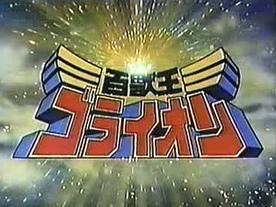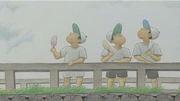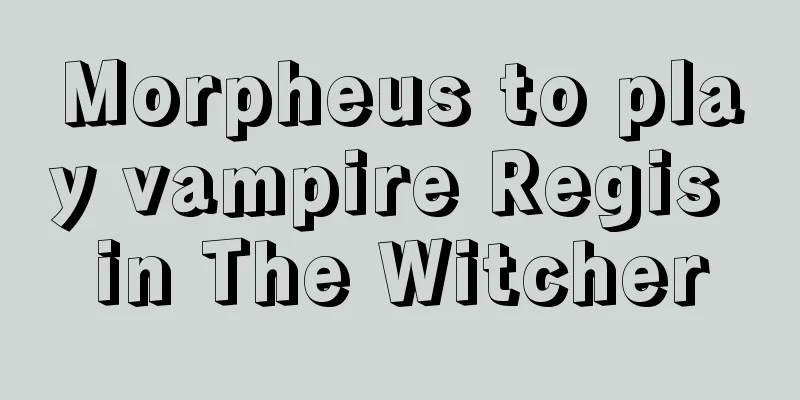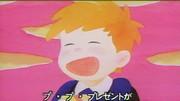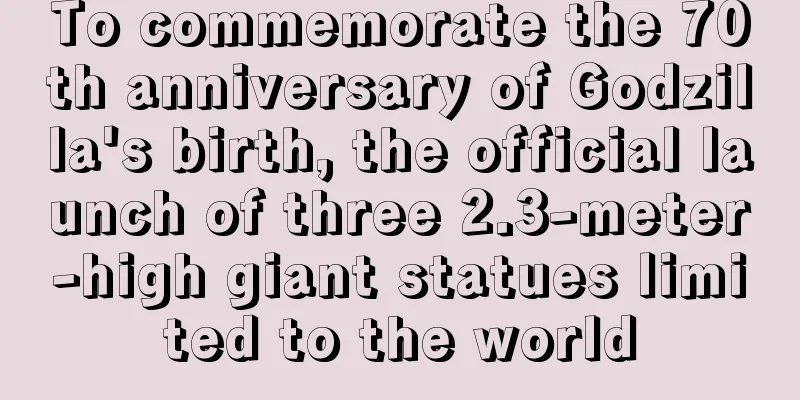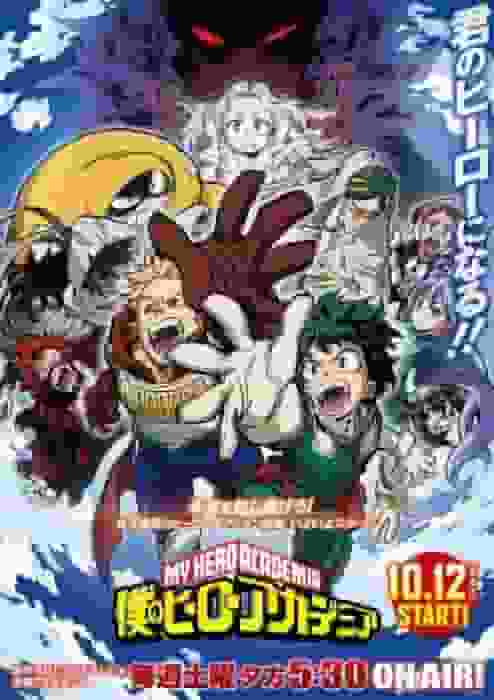The appeal and reviews of "HELLSING": A deep look into the world of vampire hunters
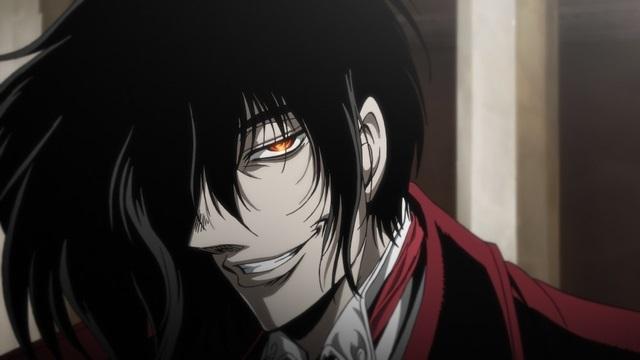
HELLSING - A fierce battle between vampires and hunters"HELLSING" is an OVA series based on the manga of the same name by Kouta Hirano, with a total of 10 episodes released between 2006 and 2012. Taking advantage of the OVA format, the work is characterized by its detailed drawings and deep story development. In this article, we will introduce the appeal and highlights of "HELLSING", as well as detailed information about the background. storyThe story of "HELLSING" begins with a bizarre incident in which a village in England is taken over by monsters. Rookie policewoman Seras Victoria and her companions head to rescue the villagers, but the village has already been taken over by "non-humans". Integra, a beautiful female commander of a special agency, appears at the chaotic headquarters and tells the police that the incident was the work of vampires and that a monster specialized in vampire hunting has been deployed. The monster is Alucard, a vampire who, despite being a human, wields a huge gun and exterminates his own kind of vampires at the command of his master. He asks Seras, who has been taken hostage and seriously injured, to choose between becoming a vampire and living, or dying. Seras chooses to live, and the Royal Protestant Knights, commonly known as the Hellsing Organization, join the group, which exterminates vampires one after another, but behind the scenes, a huge conspiracy against England and the Hellsing Organization is lurking. CommentaryThe setting of "HELLSING" is centered around three characters: Integra, the female head of the Hellsing family who governs the Royal Protestant Knights of the British Empire, commonly known as the "Hellsing Organization"; Alucard, an immortal vampire who submits to Integra; and Seras, a former policewoman who became a novice vampire by Alucard. The basic story development follows Bram Stoker's work of vampires vs. vampire hunters, and centers around the battle between the Royal Protestant Knights and vampires and ghouls. Alucard and Seras are unique in that, although they are vampires, they make their living as vampire hunters. In the beginning of the story, the Hellsing Organization deals with frequent vampire incidents in the British mainland, and local battles unfold, but halfway through the story, the mastermind behind the vampire incidents becomes clear, and the story unfolds in a chaotic manner, with non-human armies fighting each other in a bloody battle. The last battalion, "Millennium," a remnant of the Nazis who had fled to South America on Hitler's orders, appears and leads a 1,000-man vampire unit into another air raid on the British mainland. They are joined by 3,000 members of the Vatican's Ninth Airborne Crusade, and London is plunged into destruction and chaos not seen since World War II. castThe voice actors who play the main characters in "HELLSING" are as follows:
Main StaffThe following staff members were involved in the production of "HELLSING".
subtitleThe subtitles and release dates for each episode of "HELLSING" are as follows:
Related TitlesThe following works are related to "HELLSING".
Theme songs and musicThe ending theme and insert songs for "HELLSING" are as follows.
The appeal and highlights of "HELLSING"While "HELLSING" is based on the fantasy element of vampires, it also skillfully incorporates real-world history and culture. In particular, in the episode in which the remnants of Nazi Germany, "Millennium," appear, the story development reflects the historical background of World War II. In addition, religious themes are also deeply explored in the battle scene with the Vatican's Ninth Airborne Crusade. The combination of these elements makes it a work with deeper themes than simply a story of vampire hunters. Another big attraction of "HELLSING" is the detailed drawings and direction that take advantage of the OVA format. In particular, Alucard's battle scenes and Seras' growth process are depicted visually with great impact. Furthermore, each episode has a different ending theme and insert song, which adds to the atmosphere of the work musically. Character AppealEach character in "HELLSING" has their own unique and fascinating background. Alucard is an immortal vampire, yet he is also loyal to Integra, which is a contradiction. His battle scenes and lines show his intense charisma and dark charm. Meanwhile, Integra, as the head of the Hellsing Organization, shows calm and strong leadership. Her decisiveness and sense of responsibility have a great influence on the progress of the story. In addition, Seras Victoria is depicted growing as a novice vampire, which evokes sympathy from the viewer. Her purity and courage support the central theme of the story. Production background and staff commitmentSeveral studios were involved in the production of "HELLSING". The three studios, Satelight, Madhouse, and Graphinica, worked together to produce the series, resulting in different drawing styles and direction for each episode. This is one of the things that makes the most of the OVA format, and allows you to enjoy visual diversity. Also, don't miss the fact that the individuality of each staff member, including the director, character designer, and music, is reflected in the work. In particular, Hayato Matsuo's music is an important element that enhances the atmosphere of the story. Related work: "HELLSING THE DAWN""HELLSING THE DAWN" is a spin-off of "HELLSING" that tells the story of Alucard's past. This work reveals the background of how Alucard became a member of the Hellsing Organization. For fans of "HELLSING", it is an important work to learn about the character's deep psychology and history. In addition, the detailed drawings and direction that take advantage of the OVA format are of the same high quality as the main "HELLSING" story, providing plenty of visual enjoyment. Recommendations and ratingsWhile "HELLSING" is based on the fantasy element of vampires, it also skillfully incorporates real-world history and culture. In particular, in the episode in which the remnants of Nazi Germany, "Millennium," appear, the story development reflects the historical background of World War II. In addition, religious themes are also deeply explored in the battle scene with the Vatican's Ninth Airborne Crusade. The combination of these elements makes it a work with deeper themes than simply a story of vampire hunters. Another big attraction of "HELLSING" is the detailed drawings and direction that take advantage of the OVA format. In particular, Alucard's battle scenes and Seras' growth process are depicted visually with great impact. Furthermore, each episode has a different ending theme and insert song, which adds to the atmosphere of the work musically. While "HELLSING" is based on the fantasy element of vampires, it also skillfully incorporates real-world history and culture. In particular, in the episode in which the remnants of Nazi Germany, "Millennium," appear, the story development reflects the historical background of World War II. In addition, religious themes are also deeply explored in the battle scene with the Vatican's Ninth Airborne Crusade. The combination of these elements makes it a work with deeper themes than simply a story of vampire hunters. Another big attraction of "HELLSING" is the detailed drawings and direction that take advantage of the OVA format. In particular, Alucard's battle scenes and Seras' growth process are depicted visually with great impact. Furthermore, each episode has a different ending theme and insert song, which adds to the atmosphere of the work musically. While "HELLSING" is based on the fantasy element of vampires, it also skillfully incorporates real-world history and culture. In particular, in the episode in which the remnants of Nazi Germany, "Millennium," appear, the story development reflects the historical background of World War II. In addition, religious themes are also deeply explored in the battle scene with the Vatican's Ninth Airborne Crusade. The combination of these elements makes it a work with deeper themes than simply a story of vampire hunters. Another big attraction of "HELLSING" is the detailed drawings and direction that take advantage of the OVA format. In particular, Alucard's battle scenes and Seras' growth process are depicted visually with great impact. Furthermore, each episode has a different ending theme and insert song, which adds to the atmosphere of the work musically. While "HELLSING" is based on the fantasy element of vampires, it also skillfully incorporates real-world history and culture. In particular, in the episode in which the remnants of Nazi Germany, "Millennium," appear, the story development reflects the historical background of World War II. In addition, religious themes are also deeply explored in the battle scene with the Vatican's Ninth Airborne Crusade. The combination of these elements makes it a work with deeper themes than simply a story of vampire hunters. Another big attraction of "HELLSING" is the detailed drawings and direction that take advantage of the OVA format. In particular, Alucard's battle scenes and Seras' growth process are depicted visually with great impact. Furthermore, each episode has a different ending theme and insert song, which adds to the atmosphere of the work musically. While "HELLSING" is based on the fantasy element of vampires, it also skillfully incorporates real-world history and culture. In particular, in the episode in which the remnants of Nazi Germany, "Millennium," appear, the story development reflects the historical background of World War II. In addition, religious themes are also deeply explored in the battle scene with the Vatican's Ninth Airborne Crusade. The combination of these elements makes it a work with deeper themes than simply a story of vampire hunters. Another big attraction of "HELLSING" is the detailed drawings and direction that take advantage of the OVA format. In particular, Alucard's battle scenes and Seras' growth process are depicted visually with great impact. Furthermore, each episode has a different ending theme and insert song, which adds to the atmosphere of the work musically. While "HELLSING" is based on the fantasy element of vampires, it also skillfully incorporates real-world history and culture. In particular, in the episode in which the remnants of Nazi Germany, "Millennium," appear, the story development reflects the historical background of World War II. In addition, religious themes are also deeply explored in the battle scene with the Vatican's Ninth Airborne Crusade. The combination of these elements makes it a work with deeper themes than simply a story of vampire hunters. Another big attraction of "HELLSING" is the detailed drawings and direction that take advantage of the OVA format. In particular, Alucard's battle scenes and Seras' growth process are depicted visually with great impact. Furthermore, each episode has a different ending theme and insert song, which adds to the atmosphere of the work musically. While "HELLSING" is based on the fantasy element of vampires, it also skillfully incorporates real-world history and culture. In particular, in the episode in which the remnants of Nazi Germany, "Millennium," appear, the story development reflects the historical background of World War II. In addition, religious themes are also deeply explored in the battle scene with the Vatican's Ninth Airborne Crusade. The combination of these elements makes it a work with deeper themes than simply a story of vampire hunters. Another big attraction of "HELLSING" is the detailed drawings and direction that take advantage of the OVA format. In particular, Alucard's battle scenes and Seras' growth process are depicted visually with great impact. Furthermore, each episode has a different ending theme and insert song, which adds to the atmosphere of the work musically. While "HELLSING" is based on the fantasy element of vampires, it also skillfully incorporates real-world history and culture. In particular, in the episode in which the remnants of Nazi Germany, "Millennium," appear, the story development reflects the historical background of World War II. In addition, religious themes are also deeply explored in the battle scene with the Vatican's Ninth Airborne Crusade. The combination of these elements makes it a work with deeper themes than simply a story of vampire hunters. Another big attraction of "HELLSING" is the detailed drawings and direction that take advantage of the OVA format. In particular, Alucard's battle scenes and Seras' growth process are depicted visually with great impact. Furthermore, each episode has a different ending theme and insert song, which adds to the atmosphere of the work musically. While "HELLSING" is based on the fantasy element of vampires, it also skillfully incorporates real-world history and culture. In particular, in the episode in which the remnants of Nazi Germany, "Millennium," appear, the story development reflects the historical background of World War II. In addition, religious themes are also deeply explored in the battle scene with the Vatican's Ninth Airborne Crusade. The combination of these elements makes it a work with deeper themes than simply a story of vampire hunters. Another big attraction of "HELLSING" is the detailed drawings and direction that take advantage of the OVA format. In particular, Alucard's battle scenes and Seras' growth process are depicted visually with great impact. Furthermore, each episode has a different ending theme and insert song, which adds to the atmosphere of the work musically. While "HELLSING" is based on the fantasy element of vampires, it also skillfully incorporates real-world history and culture. In particular, in the episode in which the remnants of Nazi Germany, "Millennium," appear, the story development reflects the historical background of World War II. In addition, religious themes are also deeply explored in the battle scene with the Vatican's Ninth Airborne Crusade. The combination of these elements makes it a work with deeper themes than simply a story of vampire hunters. Another big attraction of "HELLSING" is the detailed drawings and direction that take advantage of the OVA format. In particular, Alucard's battle scenes and Seras' growth process are depicted visually with great impact. Furthermore, each episode has a different ending theme and insert song, which adds to the atmosphere of the work musically. While "HELLSING" is based on the fantasy element of vampires, it also skillfully incorporates real-world history and culture. In particular, in the episode in which the remnants of Nazi Germany, "Millennium," appear, the story development reflects the historical background of World War II. In addition, religious themes are also deeply explored in the battle scene with the Vatican's Ninth Airborne Crusade. The combination of these elements makes it a work with deeper themes than simply a story of vampire hunters. Another big attraction of "HELLSING" is the detailed drawings and direction that take advantage of the OVA format. In particular, Alucard's battle scenes and Seras' growth process are depicted visually with great impact. Furthermore, each episode has a different ending theme and insert song, which adds to the atmosphere of the work musically. While "HELLSING" is based on the fantasy element of vampires, it also skillfully incorporates real-world history and culture. In particular, in the episode in which the remnants of Nazi Germany, "Millennium," appear, the story development reflects the historical background of World War II. In addition, religious themes are also deeply explored in the battle scene with the Vatican's Ninth Airborne Crusade. The combination of these elements makes it a work with deeper themes than simply a story of vampire hunters. Another big attraction of "HELLSING" is the detailed drawings and direction that take advantage of the OVA format. In particular, Alucard's battle scenes and Seras' growth process are depicted visually with great impact. Furthermore, each episode has a different ending theme and insert song, which adds to the atmosphere of the work musically. While "HELLSING" is based on the fantasy element of vampires, it also skillfully incorporates real-world history and culture. In particular, in the episode in which the remnants of Nazi Germany, "Millennium," appear, the story development reflects the historical background of World War II. In addition, religious themes are also deeply explored in the battle scene with the Vatican's Ninth Airborne Crusade. The combination of these elements makes it a work with deeper themes than simply a story of vampire hunters. Another big attraction of "HELLSING" is the detailed drawings and direction that take advantage of the OVA format. In particular, Alucard's battle scenes and Seras' growth process are depicted visually with great impact. Furthermore, each episode has a different ending theme and insert song, which adds to the atmosphere of the work musically. |
<<: Papillon Rose: A thorough review of the new season! Explaining its appeal and evolution
>>: Futari wa Pretty Cure Splash☆Star - Reevaluating the appeal of the Pretty Cure series
Recommend
Reincarnated as the Villainess of an Otome Game...The Appeal and Evaluation of the Special Edition of Volume 7 with OAD
The appeal and reviews of "My Next Life as a...
Netflix horror series "The Haunting of Hill House" Season 2 "The Haunting" character poster
Today (September 27), Netflix’s hit horror series...
Review of the movie "Crayon Shin-chan: Storm Called: The Hero of the Golden Spear": A thorough analysis of the emotions and laughs in the 16th film in the series!
Crayon Shin-chan the Movie: The Storm Called the ...
The second season of the domestic animation "Fog Mountain Five Elements" officially announced the ink painting concept poster
The original Chinese animation "Wu Shan Wu X...
"Snow White" actress accused of discriminating against Chinese audiences, condemned by Chinese netizens
Recently, "Shazam! Wrath of the Titans"...
"Good Night" Minna no Uta: Thoughts and reviews on the animated version of this moving classic
"Good Night" - Looking back on the mast...
The appeal and reviews of "Bamboo Blade": An anime that lets you enjoy the world of fencing
Bamboo Blade - A story of struggle and growth of ...
Actor talks about the difference between Yennefer in The Witcher and the game: She will have her own unique story
Netflix's TV series "The Witcher" c...
Nurarihyon no Mago Volume 25 Anime DVD Pre-order Limited Edition Review and Impressions
Detailed review and recommendation of "Nurar...
Shrek team's new animation "Shan Hai Jing: The Lilliput Kingdom" is scheduled to be released on September 19
The team behind "Teenage Mutant Ninja Turtle...
Virgin Kira ranked second! The island country selected the most scumbag protagonists in the history of animation
The Japanese professional ranking website announc...
A thorough evaluation of the appeal and educational effectiveness of Sanrio's training video "With Hello Kitty"
Sanrio Discipline Video with Hello Kitty - Entert...
"Poppin' Q" Review: A Magical Harmony of Youth
"Poppin' Q" - A story of dreams and...
The American TV series "The Continental", the prequel to "John Wick", released an official trailer
The first upcoming spin-off series "The Cont...
Mushoku Tensei: Jobless Reincarnation - I Will Seriously Try If I Go to Another World - In-depth evaluation and impressions of the first and second seasons
Mushoku Tensei: Jobless Reincarnation - I Will Se...


